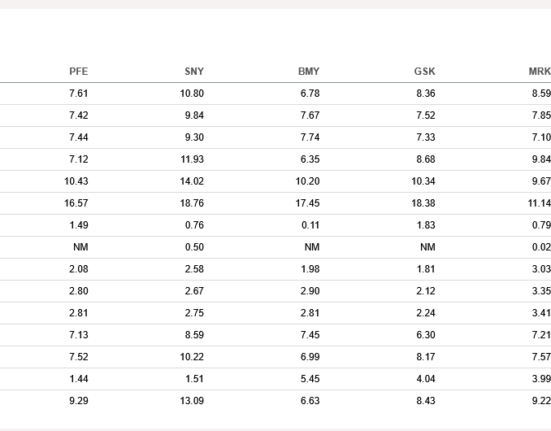“Of the applications with identified omitted double patenting rejections, approximately 60% resulted in at least one terminal disclaimer filed and approximately 30% resulted in [an] amendment filed.” – USPTO slides

Cassandra Spyrou
The U.S. Patent and Trademark Office (USPTO) held a “USPTO Hour” Wednesday in which it announced the results of a study it apparently conducted over the last five years into “Applications with Large Patent Families.” The study specifically focused on allowed applications with large patent families.
The USPTO’s Director of the Office Patent Quality Assurance (OPQA), Cassandra Spyrou, delivered the results of the study, which she said was performed in response to public concerns about “patent thickets”—especially in the pharmaceutical space—and whether the Office was doing enough to curb the practice.
The topic of large patent families spurred by continuation filings has been controversial. In June of 2022, a letter signed by a bipartisan group of U.S. senators was sent to then-USPTO Director Kathi Vidal voicing concerns over the anti-competitive impacts of patent thickets, especially in the drug industry. The senators’ letter urged Vidal to address issues of large numbers of patents granted to cover various aspects of a single pharmaceutical treatment, “primarily made up of continuation patents.” Continuation filings are subsequent patent applications disclosing the same invention from an earlier-filed pending patent application but including different claim language.
Then, in October 2022, the Office announced that it was seeking comment from the public on “proposed initiatives directed at bolstering the robustness and reliability of patents to incentivize and protect new and nonobvious inventions while facilitating the broader dissemination of public knowledge to promote innovation and competition.” The RFC included questions on the issues raised by the senators’ 2022 letter.
And in 2023, a bipartisan group of congress members also sent Vidal a letter urging her to implement some of the proposals outlined in the October 2022 RFC in order to address problems around drug pricing. They specifically expressed concerns about the practice of “patent thicketing” and gave the example of two separate patents granted for a rheumatoid arthritis biological drug by the same company, where the difference in the claims was seemingly minor.

According to the USPTO, the timeline of the study into applications with large families took place between November of 2021, when the study objectives and parameters were developed, and May 2025, when the data collection was completed. The Office collected data starting with a sample of 12,000 random office actions that are reviewed every year by OPQA and then limiting those to allowed applications that had any benefit claim under 35 USC 120. Then they further limited the data to applications from that sample with large patent families.
The Office said the data revealed that the majority of applications with large patent families are in the electrical disciplines rather than the pharmaceutical space, as some believe, and large patent families were not often found in allowed pharmaceutical applications.
However, of those large patent family applications that were reviewed, OPQA found examiners had potentially missed double patenting rejections in nearly 22% of cases.

 One of the slides (pictured left) illustrated the challenge presented for examiners in reviewing large patent families—a key goal of the study is to develop new tools to tackle this problem.
One of the slides (pictured left) illustrated the challenge presented for examiners in reviewing large patent families—a key goal of the study is to develop new tools to tackle this problem.
When potential errors were identified, the OPQA communicated the information to the technology centers and supervisory patent examiners (SPEs) and if they agreed with the assessment, action was taken to correct the application. “For example, of the applications with identified omitted double patenting rejections, approximately 60% resulted in at least one terminal disclaimer filed and approximately 30% resulted in amendment filed,” according to the presentation.
Spyrou noted toward the end of the webinar that the Office is also committed to reviewing rejections related to large patent families. “While for the purpose of this study, we focused on the review of allowances, USPTO is committed to assure that each rejection made is in compliance with patentability statutes and appropriate case law,” she said, adding: “It is just as important keep an allowed claim from being improperly rejected as it is to make sure that a claim that is not patentable is rejected.”
Echoes of Second Pair of Eyes + SAWS?
The fact that these reviews took place outside of the normal review process—and presumably unbeknownst to applicants (a request for clarification had not been answered as of the time of publication)—sounds reminiscent of some previous controversial programs carried out by the Office. Under the so-called Sensitive Application Warning System (SAWS), which was developed at the USPTO in 1994 and retired in 2015, certain applications that were deemed to merit additional scrutiny underwent another level of review. See An Ex-Insider’s Perspective on SAWS. Little was known about SAWS publicly, and in the absence of full disclosure its secretive nature created much conjecture as little by little more information came to light in the public.
Some charged the agency with subjecting these applications to unending scrutiny in a never ending examination process. See Secret Examination Procedures at the USPTO. The USPTO never said much about SAWS, and in fact, as Freedom of Information (FOIA) Requests revealed, the Office would not even tell applicants whether their applications were designated for SAWS review. See USPTO Should Release SAWS Numbers.
And going back to approximately 2002, the USPTO instituted what they referred to as “second pair of eyes” review, whereby a patent could not be issued on anything that related to a computer-implemented invention unless and until it had been approved by two separate patent examiners. According to some, the program contributed significantly to patent pendency problems.
Today, however, Spyrou said the Office is committed to transparency going forward and to “two-way communication with regard to all [of] our studies and pilots as well as all our pertinent quality data findings.”
Feedback should be submitted by September 30, 2025 to: [email protected].








